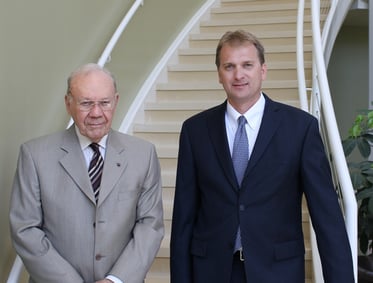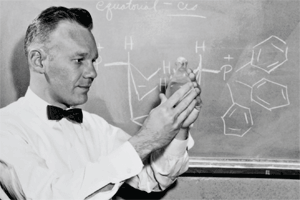carborane and polyhedral boranes
70 years of experience making Polyhedral boranes!
It began as a dream shared by the noted boron chemistry pioneer Fred Hawthorne and his former Ph.D. student, longtime colleague, and nanomedicine institute co-director Dr. Mark Lee. The two had long lamented the lack of availability and expense of polyhedral boranes, preventing these extraordinary materials from being more widely investigated in areas ranging from medicine to materials science. In 2012, while professors at the University of Missouri, the two formed the company HLB Horizons (Hawthorne-Lee-Boron), with Lee as the company president and Hawthorne as the board chairman.


50+
100+
The company launched and immediately won the top award of $400,000 from the Missouri Enterprise Investment Program, a highly competitive funding initiative. However, before accepting any funds, Hawthorne and Lee quickly realized that it would be impossible to navigate the complex COI framework of their university, while also remaining as faculty members and institute directors. HLB Horizons was disbanded, and the dream was placed on hiatus. In 2013, Mark Lee regrouped and formed Twelfth Vertex LLC, a chemical research company dedicated to advancing polyhedral borane chemistry, emphasizing the development of entirely new synthetic routes towards the boranes. For the remainder of his life, Fred Hawthorne acted as a chief advisor to that company, which has now successfully completed several dozen research projects funded by both US government agencies, as well as Fortune 500 companies.
Using new proprietary chemistry developed by Twelfth Vertex and in order to realize the original dreams of Hawthorne and Lee, Polyboron.com has launched as a company able to produce a wide range of polyhedral boranes, carboranes, and their derivatives and to very quickly provide these to researchers, particularly those keen on investigating their use in boron neutron capture therapy (BNCT), drug discovery, and materials science. Polyboron currently has a catalog of more than 100 boranes and plans to expand this catalog to more than 200 compounds over the coming months. The majority of our products are in stock and available for immediate delivery, including some compounds unavailable anywhere else in the world! Our two chief missions at Polyboron are to increase the availability of boranes for American researchers while bringing their costs down significantly, and we are pricing our compounds below those of any domestic or international competitors.
History of polyhedral boranes
By 1960, Hawthorne was a visiting professor at Harvard University, where, using X-ray diffraction and NMR, he elucidated the structures of several borane species. Hawthorne collaborated closely with Harvard professor William Lipscomb on elucidating the structure and bonding within boranes. Lipscomb, upon learning that he had won the Nobel Prize in Chemistry for this work, inquired whether he had shared the prize with Hawthorne, but that was not to be!
Fred Hawthorne went on to become the world's preeminent boron chemist. Over a nearly sixty-five-year career, he led large chemical research groups at the University of California, Riverside, UCLA, and the University of Missouri, publishing more than 600 research papers while serving as the longest-running editor-in-chief of the journal Inorganic Chemistry. For his accomplishments, Hawthorne was awarded the extraordinarily rare title of "University Professor" of the University of California in chemistry. Some of his many recognitions include an honorary doctorate from Uppsala University, the Chemical Pioneer Award, The Priestly Medal, and the National Medal of Science.
In 1954, M. Frederick Hawthorne was recruited to join the staff of the Rohm and Haas Co., Redstone Arsenal Research Division. At that time, the field of boron chemistry was in its infancy, consisting of simple boron oxides, as well as the seminal work on BxHy boron hydrides (including B10H14) described by Alfred Stock. Hawthorne quickly rose to the rank of group leader, assembling a team of chemists who would greatly expand the scope of boron hydride chemistry over the ensuing decade. Many new classes of compounds, including carboranes and borate anions, were discovered by the Redstone chemists. Hawthorne was the first to isolate the dianions B10H10^2- and B12H12^2- and also the first to elucidate the chemical structures of the new 10- and 12-vertex clusters.


Contact Us


For inquiries about our polyhedral boranes, carboranes, or borate anions, please reach out to us. We're here to assist you!
In addition to your name and email address, please include the products and quantities of interest.
